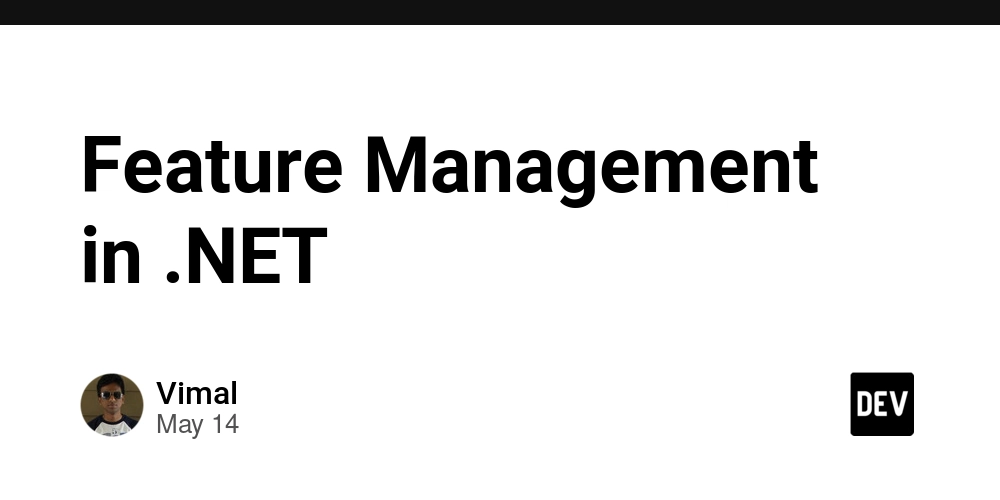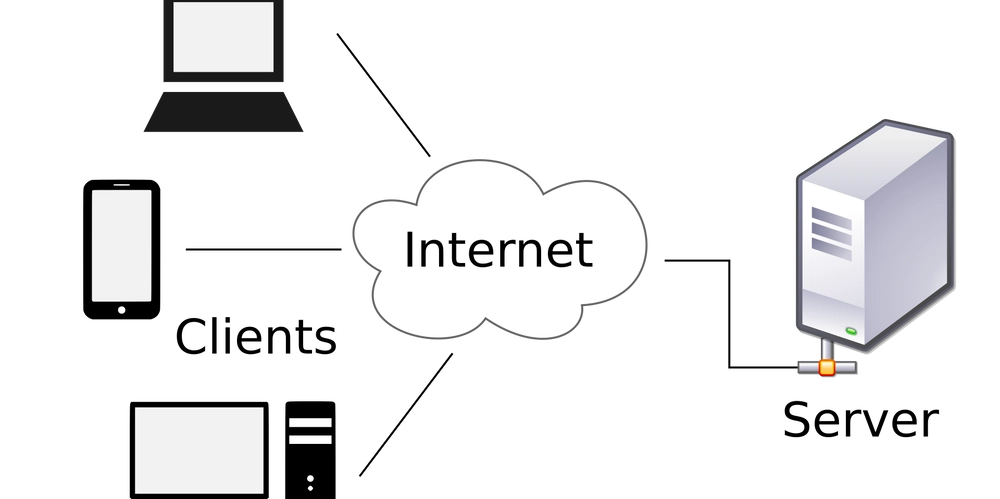Feature Management in .NET
What is Feature management? Feature management is a software development practice that allows teams to control the release and behavior of features in an application without deploying new code. It’s often implemented using feature flags (also called feature toggles), which are conditional statements in the code that turn features on or off based on configuration. The Feature Manager in .NET, provided by the Microsoft.FeatureManagement library, is a tool that allows developers to manage and control application features dynamically. It is particularly useful for implementing feature flags or feature toggles, which enable or disable specific features in an application without requiring code changes or redeployment. Significance of Feature Manager Dynamic Feature Control: Features can be turned on or off at runtime based on configuration or external conditions. This allows for gradual rollouts, A/B testing, or enabling features for specific users or environments. Safe Deployment: New features can be deployed in a "disabled" state and enabled only after testing or validation. This reduces the risk of introducing bugs or breaking changes in production. Environment-Specific Features: Features can be enabled or disabled based on the environment (e.g., development, staging, production). Targeted Feature Rollouts: Features can be enabled for specific users, groups, or conditions (e.g., premium users, beta testers). Improved Development Workflow: Developers can work on features in parallel without worrying about incomplete features affecting production. Incomplete features can be hidden behind feature flags until they are ready. Integration with Configuration Systems: Feature flags can be managed through configuration files (e.g., appsettings.json), external services, or Azure App Configuration. Azure Integration: The Microsoft.FeatureManagement library integrates seamlessly with Azure App Configuration, allowing centralized management of feature flags across multiple applications. Use Cases of Feature Manager Gradual Rollouts: Enable a new feature for a small percentage of users and gradually increase the rollout. A/B Testing: Test different versions of a feature to determine which performs better. Hotfixes: Quickly disable a problematic feature without redeploying the application. User-Specific Features: Enable features for specific user groups, such as beta testers or premium users. Environment-Specific Features: Enable features only in specific environments, such as development or staging. Example Using the Feature Manager, you can define a feature flag in appsettings.json: { "FeatureManagement": { "EnableNewFeature": true } } And control the feature in your code: if (await _featureManager.IsEnabledAsync("EnableNewFeature")) { // Execute the new feature logic } else { // Fallback logic } In summary, the Feature Manager is a powerful tool for managing application features dynamically, improving flexibility, and reducing deployment risks. It is especially useful in modern development practices like DevOps, Continuous Integration/Continuous Deployment (CI/CD), and cloud-native applications.

What is Feature management?
Feature management is a software development practice that allows teams to control the release and behavior of features in an application without deploying new code. It’s often implemented using feature flags (also called feature toggles), which are conditional statements in the code that turn features on or off based on configuration.
The Feature Manager in .NET, provided by the Microsoft.FeatureManagement library, is a tool that allows developers to manage and control application features dynamically. It is particularly useful for implementing feature flags or feature toggles, which enable or disable specific features in an application without requiring code changes or redeployment.
Significance of Feature Manager
- Dynamic Feature Control:
- Features can be turned on or off at runtime based on configuration or external conditions.
- This allows for gradual rollouts, A/B testing, or enabling features for specific users or environments.
- Safe Deployment:
- New features can be deployed in a "disabled" state and enabled only after testing or validation.
- This reduces the risk of introducing bugs or breaking changes in production.
- Environment-Specific Features:
- Features can be enabled or disabled based on the environment (e.g., development, staging, production).
- Targeted Feature Rollouts:
- Features can be enabled for specific users, groups, or conditions (e.g., premium users, beta testers).
- Improved Development Workflow:
- Developers can work on features in parallel without worrying about incomplete features affecting production.
- Incomplete features can be hidden behind feature flags until they are ready.
- Integration with Configuration Systems:
- Feature flags can be managed through configuration files (e.g., appsettings.json), external services, or Azure App Configuration.
- Azure Integration:
- The Microsoft.FeatureManagement library integrates seamlessly with Azure App Configuration, allowing centralized management of feature flags across multiple applications.
Use Cases of Feature Manager
- Gradual Rollouts: Enable a new feature for a small percentage of users and gradually increase the rollout.
- A/B Testing: Test different versions of a feature to determine which performs better.
- Hotfixes: Quickly disable a problematic feature without redeploying the application.
- User-Specific Features: Enable features for specific user groups, such as beta testers or premium users.
- Environment-Specific Features: Enable features only in specific environments, such as development or staging.
Example
Using the Feature Manager, you can define a feature flag in appsettings.json:
{
"FeatureManagement": {
"EnableNewFeature": true
}
}
And control the feature in your code:
if (await _featureManager.IsEnabledAsync("EnableNewFeature"))
{
// Execute the new feature logic
}
else
{
// Fallback logic
}
In summary, the Feature Manager is a powerful tool for managing application features dynamically, improving flexibility, and reducing deployment risks. It is especially useful in modern development practices like DevOps, Continuous Integration/Continuous Deployment (CI/CD), and cloud-native applications.




































































































































































![[The AI Show Episode 147]: OpenAI Abandons For-Profit Plan, AI College Cheating Epidemic, Apple Says AI Will Replace Search Engines & HubSpot’s AI-First Scorecard](https://www.marketingaiinstitute.com/hubfs/ep%20147%20cover.png)

































































































































































































































































_Gang_Liu_Alamy.jpg?width=1280&auto=webp&quality=80&disable=upscale#)































































































![Review: Sonnet Echo 13 Thunderbolt 5 SSD Dock – 140W MacBook charging, 2.5GbE, up to 6000 MB/s SSD speed [Video]](https://i0.wp.com/9to5mac.com/wp-content/uploads/sites/6/2025/05/Sonnet-Echo-13-Thunderbolt-5-SSD-Dock-Review-1.jpg?resize=1200%2C628&quality=82&strip=all&ssl=1)



















![Apple Planning Bezel-Free iPhone With 'Four-Sided Bending' Display [Report]](https://www.iclarified.com/images/news/97321/97321/97321-640.jpg)

![Apple Working on Brain-Controlled iPhone With Synchron [Report]](https://www.iclarified.com/images/news/97312/97312/97312-640.jpg)































































































